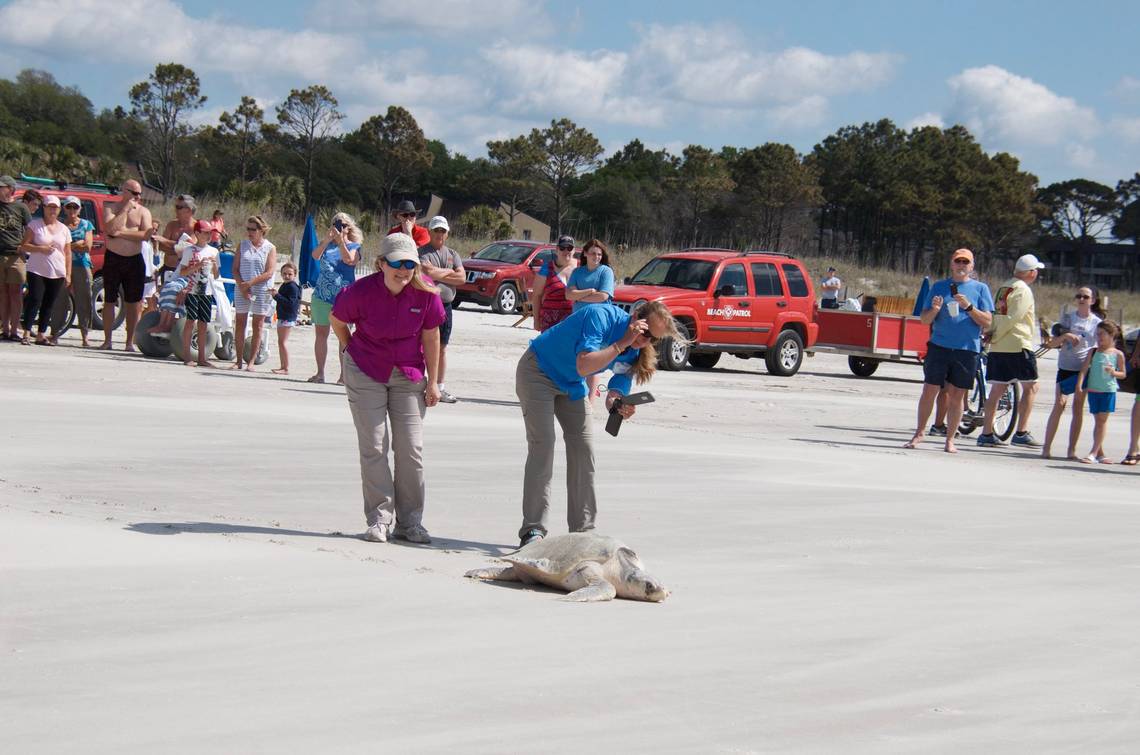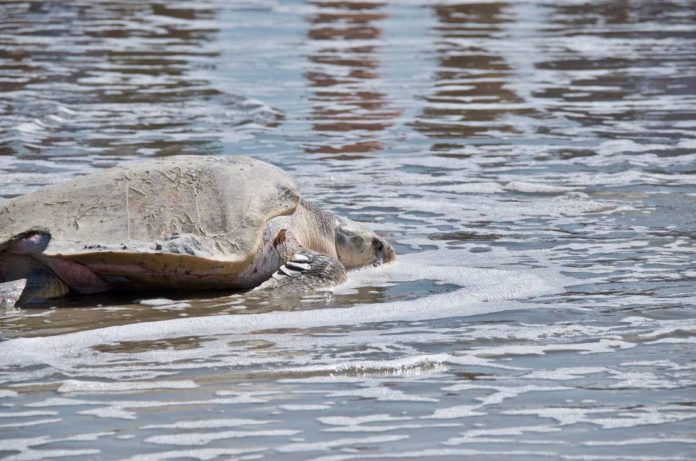Beach-goers in southern Beaufort County were treated to a rare sight on Friday morning when a sea turtle came ashore in broad daylight to build her nest and lay her eggs.
But, it wasn’t your average loggerhead turtle. According to a report by SCDNR, it was an endangered Kemp’s ridley sea turtle and it kicked off our local sea turtle nesting season a week early.
“This is only the fourth confirmed Kemp’s nest in South Carolina since record-keeping started in the 1970s,” said SCDNR biologist Michelle Pate. “An exciting kick-off to the season, to say the least.”
There are only about 7,000 to 9,000 nesting females worldwide, according to the Sea Turtle Conservancy.
South Carolina’s official sea turtle nesting season runs from May 1 to October 31 each year. This year’s warm winter prompted the early arrival of sea turtles in South Carolina waters, many in pursuit of cannonball jellyfish and other favorite food items. SCDNR biologists are anticipating a successful year of high nest numbers, following a dip in 2018.

Turtle numbers the past few years
In 2018, volunteers and staff documented 2,767 nests in South Carolina, which represented an unusually low year. That drop was likely due to cyclical nesting patterns, which result in fewer sea turtle nests in some years than in others. Because nesting exacts a high energy toll on the large reptiles, female sea turtles do not come ashore to lay eggs every year.
Sea turtle nest numbers did, however, break records across the Southeast in 2016, including South Carolina, where a total of 6,444 loggerhead nests were laid – the highest number counted since the founding of SCDNR’s sea turtle program in the late 1970s. That’s still a long way from the federal Loggerhead Recovery Plan’s goal of 9,200 nests, but biologists across the region are optimistic that the recent gains represent the beginning of recovery for these threatened reptiles after several decades of conservation efforts.
Volunteers from 30 different nest protection programs will spend the next several months patrolling South Carolina’s beaches each morning for crawls, the telltale tracks left by a female sea turtle as it trundles ashore. Between bright lights, hazardous debris, and natural or man-made obstacles, beaches can be treacherous places for nesting females. Incubating eggs face additional threats, including erosive high tides and predators such as coyotes and raccoons.
Four sea turtle species nest on South Carolina beaches: loggerheads, greens, Kemp’s ridleys, and leatherbacks. Loggerhead nests comprise the vast majority of the state’s total number each year. All four sea turtle species are classified as endangered or threatened and are protected under the Endangered Species Act in addition to local and state ordinances.
Sea turtle clutches average 120 eggs and hatch after approximately 60 days. Nesting females may remain in South Carolina waters and continue to nest every two weeks, laying up to six nests per season. Throughout this stressful time, the turtles also abstain from eating.
South Carolina beachgoers can help the state’s sea turtles by keeping beaches clean, turning beachfront lights out to avoid disorienting turtles, and giving all sea turtles and nests a wide and respectful berth when encountered on the beach.
Sea Turtle Nesting Season Reminders
- Report all sick/injured/dead sea turtles and nest disturbances to the SCDNR at 1-800-922-5431 so that staff/volunteers can respond as soon as possible.
- Respect boating laws and boat cautiously, especially in small tidal creeks where sea turtles like to feed. Boat strikes have emerged as the leading cause of death for sea turtles in South Carolina.
- Keep artificial lights off the beach at night during nesting season – this includes beachfront property lights and flash photography, which can disorient nesting mothers and hatchlings.
- Always respect sea turtles by observing them from a distance on the beach. Individuals that violate federal law by harming or interfering with sea turtles or their nests can be subject to civil penalties of up to $25,000 and up to a year’s imprisonment.
- Keep our beaches and ocean clean by avoiding single-use plastics. Plastic bags and balloons are among the most common trash items found on South Carolina beaches and can cause injury or death when sea turtles mistake them for food.
- Promote and support the SCDNR program for continued conservation of sea turtles in South Carolina.










